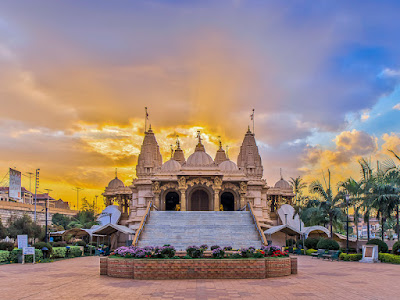BAPS Shri Swaminarayan Mandir in Nairobi, Kenya is a Hindu temple that holds great significance. While there were existing temples in Africa, this particular temple stands out as the first of its kind to be built with traditional stone and marble materials on the African continent.
BAPS Shri Swaminarayan Mandir Nairobi, Kenya
The construction of this magnificent Swaminarayan temple was undertaken by the BAPS Swaminarayan Sanstha, a Hindu denomination within the Swaminarayan Sampradaya. On 29th August 1999, the temple was inaugurated by Pramukh Swami Maharaj, the esteemed 5th spiritual leader of the BAPS Swaminarayan Sanstha.
BAPS Swaminarayan Mandir was meticulously crafted in adherence to the ancient Hindu shilpa shastras, utilizing 350 tonnes of yellow sandstone sourced from Jesalmer in Rajasthan, India. This exquisite stone was extracted from the mines and then transported to Pindwada, approximately 400 km away from Jesalmer, where it was skillfully hand-carved by a team of 150 talented craftsmen. After two years of dedicated carving, the intricately carved pieces were carefully transported to Mombasa, Kenya, and subsequently assembled in Nairobi, resembling a colossal three-dimensional jigsaw puzzle.
 |
| BAPS Shri Swaminarayan Mandir Nairobi, Kenya |
BAPS Shri Swaminarayan Mandir interior stands out due to its distinctive feature of being crafted from intricately carved wood. While most traditional Hindu temples typically have stone interiors, the BAPS Shri Swaminarayan Mandir deviates from this norm by utilizing indigenous timber sourced from East Africa. The wood used includes camphor, mahogany, mvule, Mt. Elgon teak, and meru oak. These materials were exported to India and skillfully carved by a team of around 250 craftsmen.
Before finalizing the design of the temple, a group from Kenya explored various renowned temples and monuments in Rajasthan, Kerala, and other parts of India. The Mandir is adorned with shikhars (pinnacles), stambhas (pillars), and ghummats (domes).
Comments
Post a Comment